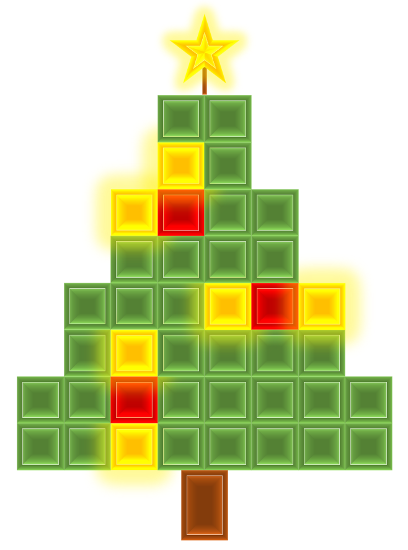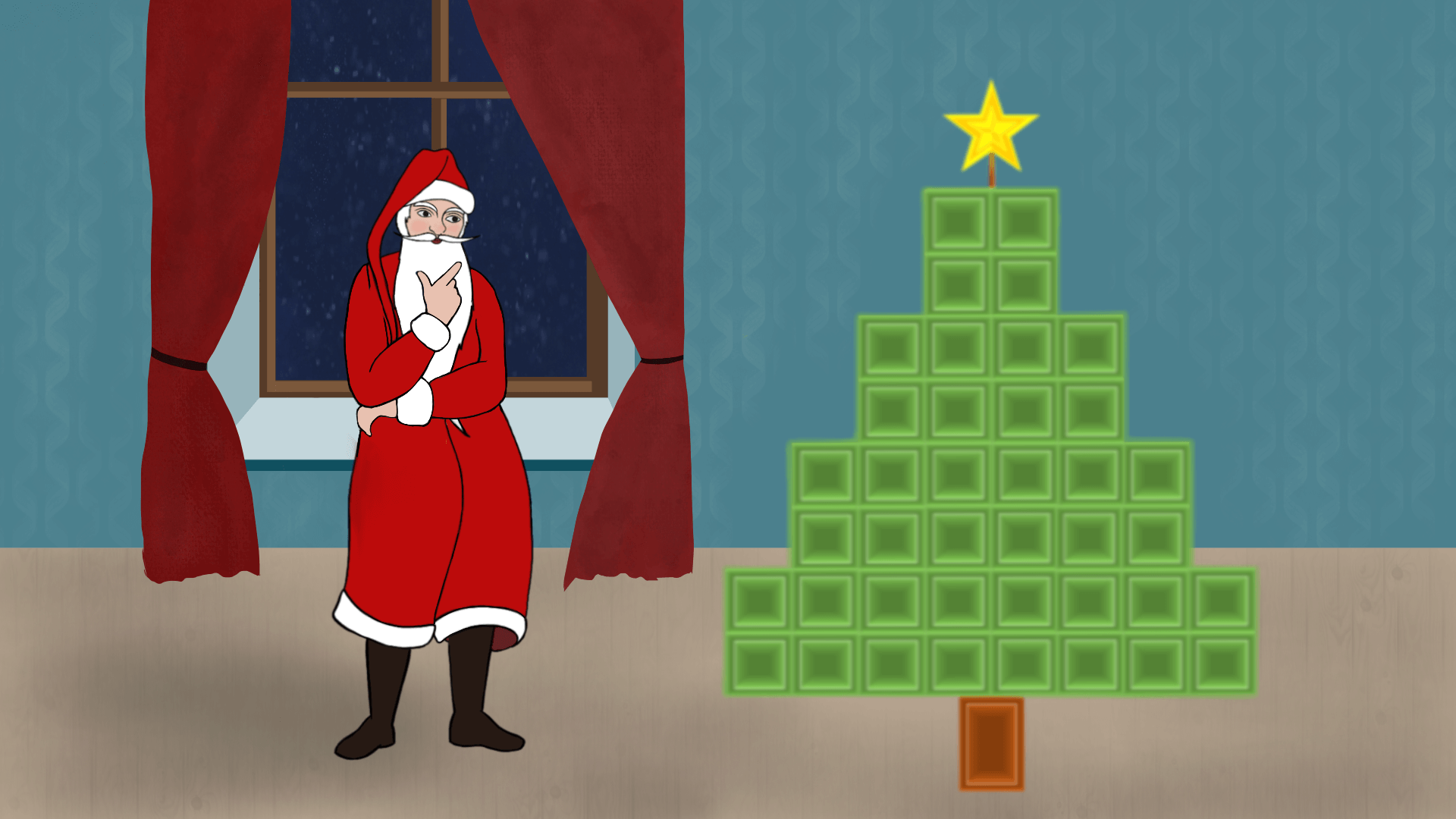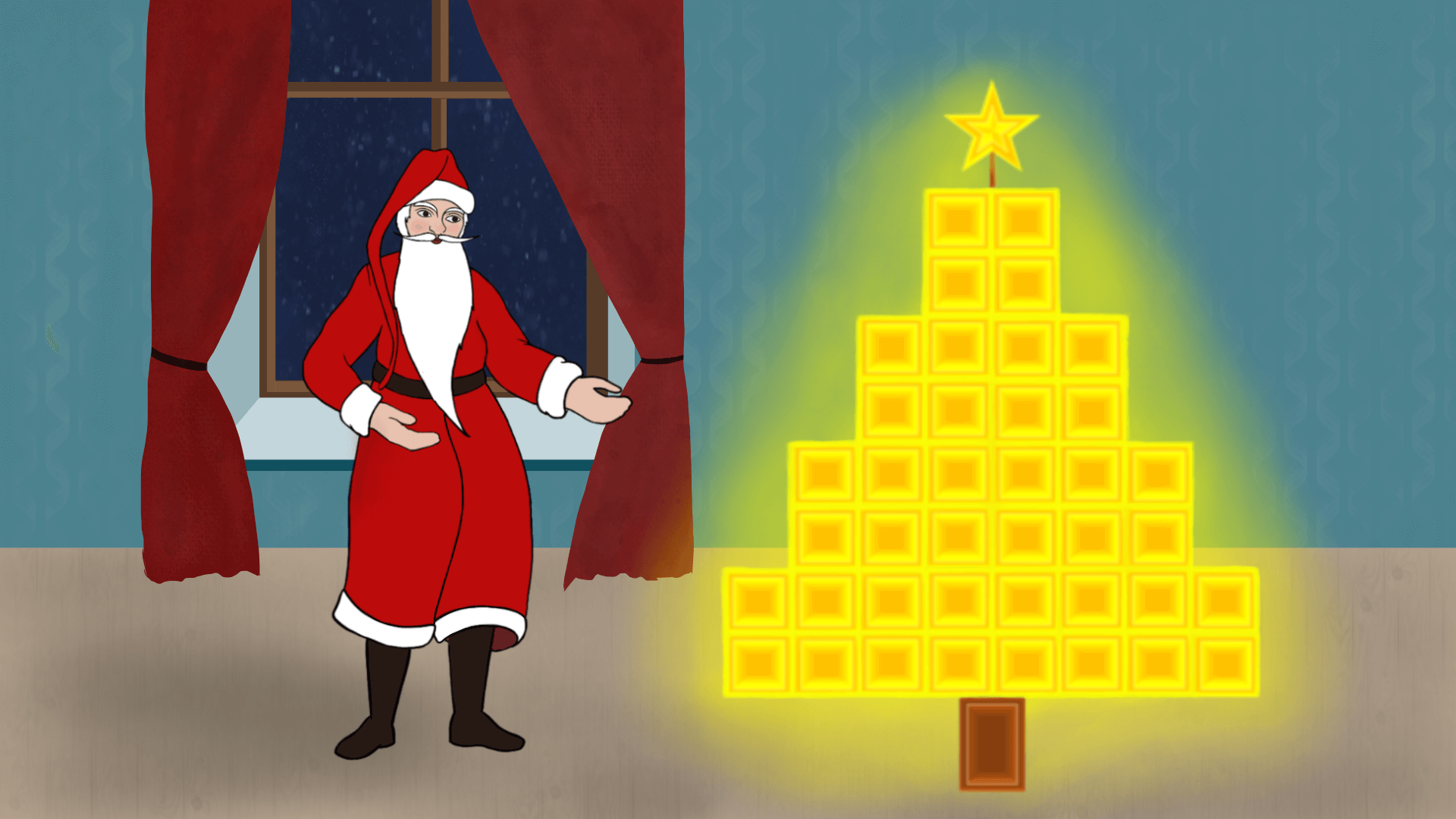© Frauke Jansen, MATH+
Authors: Susanne Brinkhaus (HU Berlin, Käthe-Kollwitz-Gymnasium), Christoph Werner (HU Berlin)
Project: School@DecisionTheatreLab (BUA Experimental Lab for Science Communication)
Challenge
Santa Claus has chosen a Christmas tree with very special lighting this year. The Christmas tree is divided into 40 small squares, and in each square there is exactly one light that is either on or off (see Fig. 1).
The special feature: the lights on the tree can light up each other. A light that is off is lit up if the lights in at least two horizontally or vertically adjacent squares are already burning (see Fig. 1). The newly lit lights can subsequently ignite further lights. A light cannot be lit across diagonally adjacent squares. In addition, once a light is on, it continues to burn and does not go out.

Figure 1: Santa’s Christmas tree. An example with burning lights (yellow squares) and the lights ignited by them (red squares).
What is the smallest possible number of already burning lights on Santa’s Christmas tree needed, such that eventually every light on the tree is lit up?
Possible answers:
- The smallest possible number of already burning lights is 6.
- The smallest possible number of already burning lights is 7.
- The smallest possible number of already burning lights is 8.
- The smallest possible number of already burning lights is 9.
- The smallest possible number of already burning lights is 10.
- The smallest possible number of already burning lights is 11.
- The smallest possible number of already burning lights is 12.
- The smallest possible number of already burning lights is 13.
- The smallest possible number of already burning lights is 14.
- The smallest possible number of already burning lights is 15.
Project reference:
The operating principle of the Christmas tree corresponds to that of a cellular automaton. In a way, agent-based models are generalization of such cellular automata and can be used to model complex dynamical systems in which global properties depend on the behaviour of many individual agents. In the project School@DecisionTheatreLab, funded by MATH+ and BUA, such agent-based models for socially relevant topics are mathematically analysed and used as a starting point for political discussions.

